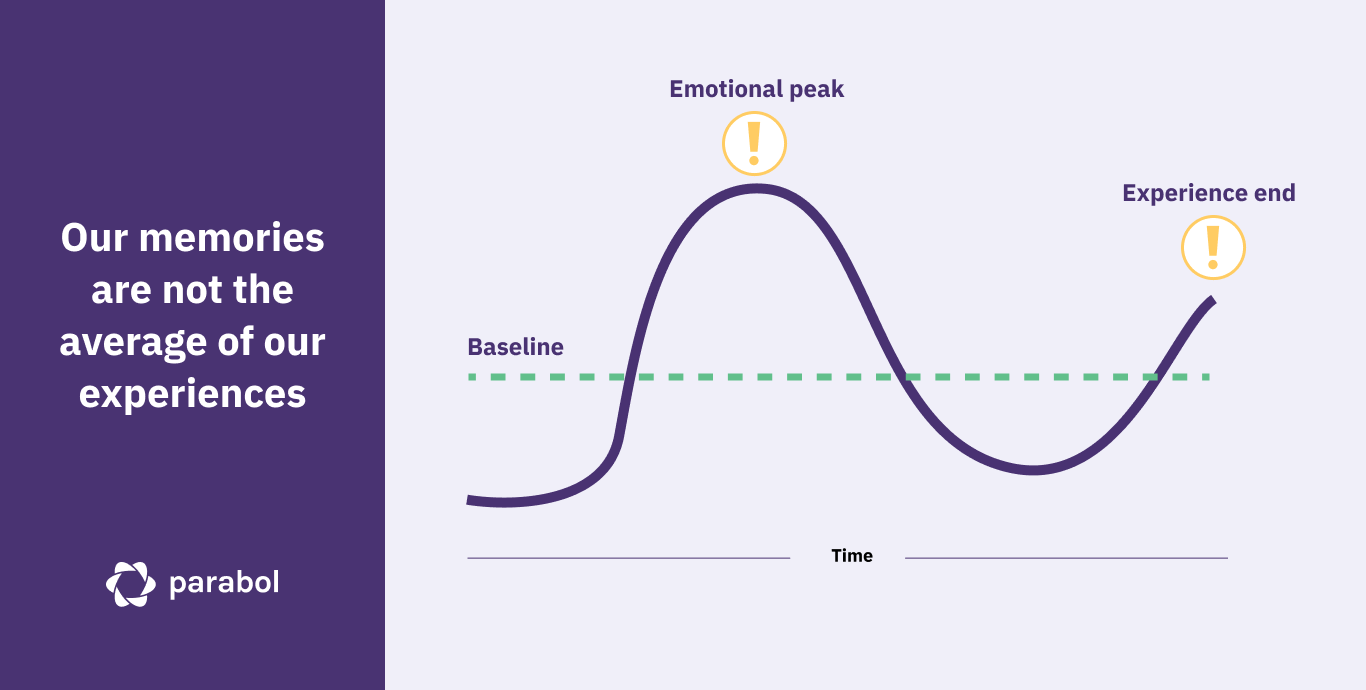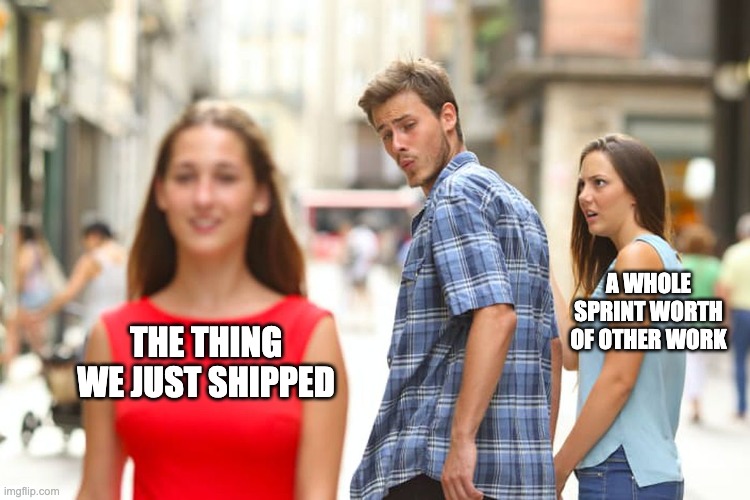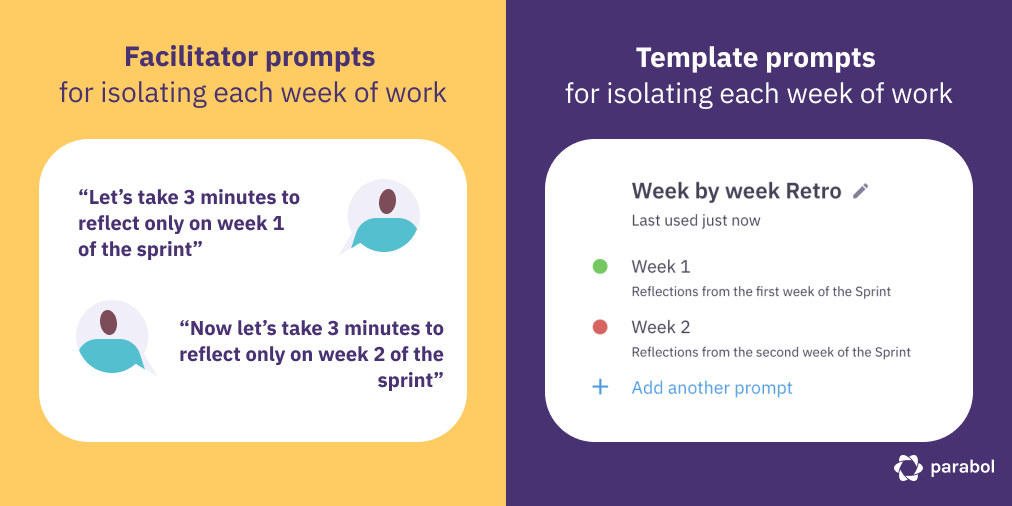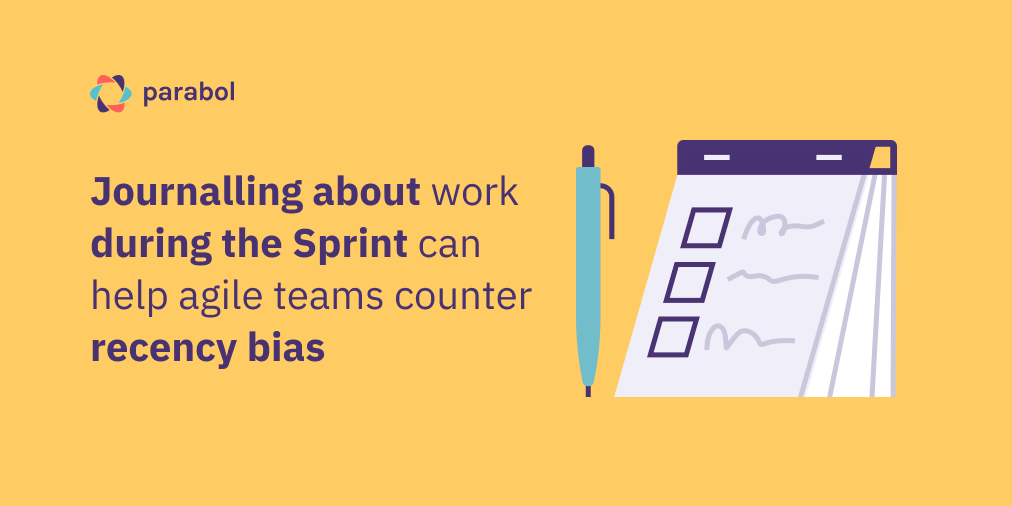How to Counter Recency Bias in Your Sprint Retrospectives

Have you ever been in a sprint retrospective where the most recent bits of work just feel like the most important ones to discuss? If that sounds familiar, you might be suffering from unchecked recency bias in your retrospectives – something that affects all of us, whether we recognise it or not.
As human beings we are all hardwired to place greater importance on things that are fresh in our memory than things that happened a few weeks ago.
Now that can cause some problems…because agile retrospectives are meant to cover at least 2-weeks of work. And a whole lot can happen in two weeks.
It’s easy to bias towards that tough cookie issue that’s been bothering you the last few days at the expense of everything else that happened over the course of the sprint.
So how can we recognise and counter recency bias to run better retrospectives?
What is recency bias?
Recency bias is a cognitive bias that causes humans to assign greater importance to more recent events. And it’s something we can all fall prey to in retrospectives.

Israeli psychologist Daniel Kahneman wrote about recency bias in his book ‘Thinking Fast and Slow’. He talks about the Peak-End rule – which claims that humans remember two parts of their experiences best:
- The most emotional events; and
- The most recent (or final) events
Hence the weight assigned to a prosecutor’s final speech in a long court trial – or in our case, the piece of work you just finished at the end of a sprint.
The tricky thing about recency bias is learning how to spot it. Sometimes it’s difficult to even catch when we are falling victim to our biases.
The risk is that if we let our biases roam free, we might spend our precious retro time discussing what seems most important rather than what is most important.
Here are three ideas for how teams can conquer recency bias in their retrospectives.
1. Review the Sprint Backlog to set the stage
Esther Derby, Diana Larsen and Ken Schwaber wrote at length about the importance of ‘setting the stage’ in their book Agile Retrospective: Making Good Teams Great.
And there’s a reason why it’s the first of their 5 stages of a retrospective:
Because if you’re running two-week sprints, it’s a big ask to expect your agile team to transport themselves to the start of the sprint and remember everything that happened in just 5-10 minutes of writing reflections.

You need to set the stage to get your team in the right frame of mind and review what you achieved over the sprint.
Here are a few ways meeting facilitators can help their teams remember more and counter recency bias:
- Ask each team member to summarise what they covered in the sprint as an icebreaker activity. This should take no more than 60 seconds each. If you’re working remotely, each team member can show their Kanban board. This process is as much about helping the presenter gain clarity as it is the rest of the team.
- Review roadmap milestones together in Jira or GitHub. This lets you take a zoomed-out look. Instead of setting the stage individually, the facilitator can frame the sprint according to progress on the product roadmap.
- Sharing and reviewing the Sprint Backlog. The facilitator can take a zoomed-in approach and share the sprint backlog explaining what the team set out to achieve at the start of the sprint and what has been achieved at the end of the sprint. The facilitator should also mention any items that will be rolled over to the next sprint because the team may wish to add reflections on items that weren’t completed.
These simple approaches to setting the stage can make a big difference by reminding everyone of the full scope of work in the sprint.
2. Ask for reflections from each week of the sprint
Recency bias becomes more pronounced the longer the gap is between two events. But even two weeks can be long enough for teams to face some problems.
Facilitators can counter recency bias by separating retrospective reflections according to each week of the sprint – forcing the team to focus on each week individually.

Here are a couple of ways facilitators can collect reflections on each week separately:
- Split the team’s reflection time according to weeks 1 and 2 of the sprint. Give the team 3-4 minutes to add reflections for week 1 and then ask them to take another 3-4 minutes to reflect on week 2.
- Build a retro template that includes “week 1 reflections” and “week 2 reflections”. You can do this either on a whiteboard or in an online tool. If you can see more reflections in the week 2 column, you might need to do more to overcome recency bias. Simply notify your team: “I can’t see many reflections in week 1 – can we dig deep and add some more?”
Alternatively, you can encourage the team to add reflections throughout the sprint – as if they were journaling – which leads to the next point.
3. Treat your retrospectives like keeping a journal
You can treat your retrospectives a bit like keeping a journal.
One psychological benefit of journaling is that it helps to keep you grounded and counter how our mind distorts time. Each journal entry captures how you were feeling each day and what tensions you faced.
If you’ve been struggling with some work in the days before the retro, it can be easy to feel like the whole sprint was doomed. But looking back over a journal can help you realise that perhaps the whole sprint wasn’t as bad as you thought.

There’s something to learn from this practice, because journaling brings us face to face with our bias.
Scrum Masters and meeting facilitators can borrow from the practice of journaling by encouraging our teams to add reflections throughout the whole sprint.
Here are some methods to try out:
- Encourage team members to keep a work journal to jot down reflections during the sprint. You can do this in Google Docs, Notion, or actually buy your team retrospective journals! When it’s time for the retrospective, each team member can add their reflections to your retrospective. If your team isn’t worried about keeping reflections anonymous, you can encourage the team to add their reflections into one shared document.
- Collect reflections asynchronously by opening an online retrospective board at the start of the sprint. This lets individual team members jump in and add reflections when it suits them. This allows you to maintain anonymity and removes the need to spend time copying reflections from a document into an online tool or onto sticky notes.
- Keep a reflections box in the office. If you’re all working together in the office, set up a reflections box so team members can add anonymous reflections during the sprint. They can simply note down reflections on a piece of paper and post them into the box.
When it’s time to meet in-person for your retrospective meeting, you can take a few minutes for additional reflections on the sprint as a whole.
Facilitator tip:
Sometimes it’s not convenient for the team to disrupt their work by adding reflections all the way through the sprint. If you can see that your team members aren’t adding reflections, you can nudge the team every Friday afternoon to reflect on the week while it’s fresh in their minds – before the weekend kicks in. That means when it’s time for your bi-weekly retrospective, you already have 1 week of reflections in the bank!
Recognise recency bias for better Retrospective outcomes
Cognitive biases are difficult to account for because they are difficult to recognise in the first place. But since we are all human, they’re a part of who we are – for better or worse.
Retrospectives are a time for the team to reflect on the whole sprint – not just the bits they remember best or are most recent.
So next time you run a retrospective, make sure you’re setting the stage, encouraging reflections for each week, or opening reflections early, so you can get the most sober and balanced feedback from your retros.








